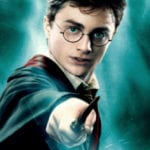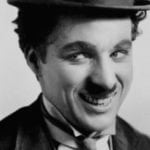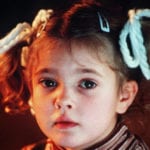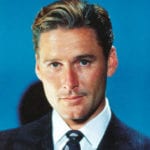 Mysteries
Mysteries  Mysteries
Mysteries  Creepy
Creepy 10 Scary Tales from the Middle Ages That’ll Keep You up at Night
 Humans
Humans 10 One-of-a-kind People the World Said Goodbye to in July 2024
 Movies and TV
Movies and TV 10 Holiday Movies Released at Odd Times of the Year
 Politics
Politics 10 Countries Where Religion and Politics Are Inseparable
 Weird Stuff
Weird Stuff 10 Freaky Times When Famous Body Parts Were Stolen
 Miscellaneous
Miscellaneous 10 Interesting Things Manufacturers Stopped Making and Why
 Gaming
Gaming 10 Funny Tutorials in Games
 History
History 10 Fascinating Little-Known Events in Mexican History
 Facts
Facts 10 Things You May Not Know about the Statue of Liberty
 Mysteries
Mysteries 10 Devastating Missing Child Cases That Remain Unsolved
 Creepy
Creepy 10 Scary Tales from the Middle Ages That’ll Keep You up at Night
 Humans
Humans 10 One-of-a-kind People the World Said Goodbye to in July 2024
Who's Behind Listverse?

Jamie Frater
Head Editor
Jamie founded Listverse due to an insatiable desire to share fascinating, obscure, and bizarre facts. He has been a guest speaker on numerous national radio and television stations and is a five time published author.
More About Us Movies and TV
Movies and TV 10 Holiday Movies Released at Odd Times of the Year
 Politics
Politics 10 Countries Where Religion and Politics Are Inseparable
 Weird Stuff
Weird Stuff 10 Freaky Times When Famous Body Parts Were Stolen
 Miscellaneous
Miscellaneous 10 Interesting Things Manufacturers Stopped Making and Why
 Gaming
Gaming 10 Funny Tutorials in Games
 History
History 10 Fascinating Little-Known Events in Mexican History
 Facts
Facts 10 Things You May Not Know about the Statue of Liberty
10 Tragic Backgrounds Of Beloved Hollywood Stars
Being a Hollywood star requires not only looks and talent but also determination in the face of constant criticism. To put it lightly, one must have a thick skin. Many of the most enduring cinema icons earned their resilience through shockingly tragic backgrounds. Bad reviews, crazy press, and failed box office numbers pale in comparison.
10Clara Bow
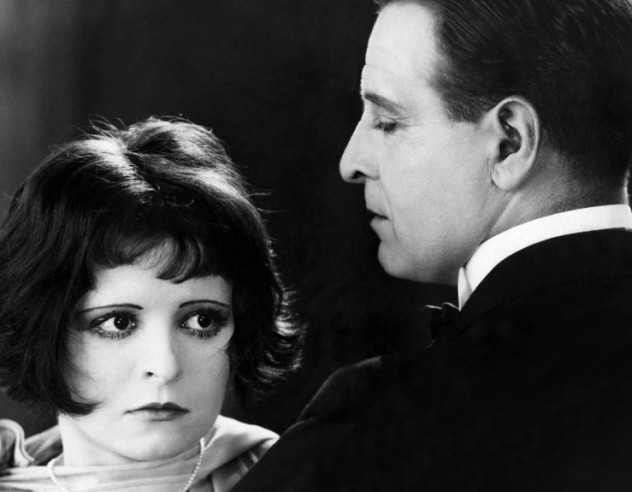
“Even now, I can’t trust life. It did too many awful things to me as a kid.” When going for tears during an emotional scene, some actors pick a nose hair, others use eye drops. Clara Bow? She just thought about the day her childhood friend Johnny died in her arms having been burned alive in a tenement fire.
There are tough circumstances and then there are Clara Bow’s circumstances. She was born into abject poverty, and her parents moved often between derelict Brooklyn tenements during the early years of the 20th century. Her father was thought by some to be mentally disturbed. Robert was slow, unable to hold a job, abusive, and obsessed with sex.
Later in life, Clara confessed that at age 16 she was raped by her father. He would abandon the family on alcoholic benders for months at a time, leaving Clara’s mentally ill mother, Sarah, to come up with ways to pay the rent and feed Clara. Sarah was a prostitute on a “for need” basis and would hide Clara in the cabinets while she entertained clients. Clara escaped life at the movies and was elated when she won first place in a fan magazine beauty contest because it landed her a bit movie part.
Sarah, despite her own actions, equated being an actress with being a prostitute. After revealing the news of her win to Sarah, Clara awoke one night to find a butcher knife at her throat, wielded by her own mother. Sarah claimed that murdering Clara was better than letting her become a whore. Luckily, she didn’t go through with the murder and Sarah eventually died in the same asylum that housed her mother and sisters.
Clara was able to transcend her humble beginnings to become one of Hollywood’s biggest stars during the 1920s, but she was never able to shake her past. She was ostracized by many in Hollywood because of her thick Brooklyn accent and unrefined manners. Behavior that would pass muster with some, like sleeping around or drinking heavily, was chastised when it came to Clara. An entirely fabricated major sex scandal hit the news and, unable to cope, Clara had a nervous breakdown. She left Hollywood by age 30 to marry Rex Bell. In 1949, she was diagnosed as a schizophrenic.
9Rita Hayworth
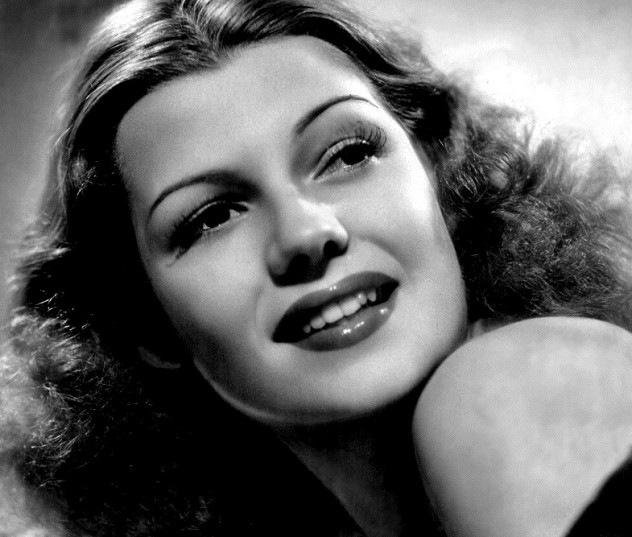
Born Margarita “Rita” Carmen Cansino, Rita’s father was a Spanish-born dancer and her mother a former Ziegfeld girl. Rita was dancing professionally by age 10 and the family moved to Los Angeles for more work when she was in ninth grade. By age 14, Rita was performing with her father in nightclubs. It was an odd arrangement to say the least. Rita’s father presented her as his wife, and he even taught her how to tantalize the audience.
The stage work only hinted at what was going on behind the scenes: Rita had been the victim of regular rape and abuse at the hands of her father since childhood. Rita’s mother tried to offer protection by sharing a bed with her daughter at night, but Rita’s father found a way to continue his behavior.
In an effort to escape, 18-year-old Rita married a 41-year-old named Eddie Judson. Eddie, in Rita’s words, saw her as “an investment.” Even though she had already appeared in films as Rita Consuelo—mostly as a dancer—Eddie decided that a less “ethnic” look would boost Rita’s chances at stardom. Electrolysis and a dye job followed, as well as a new name: Rita Hayworth. Eddie also got his wife into the press every way he could including “loaning” her out to men who could advance her career. Not surprisingly, he was as controlling as he was abusive. Eddie threatened disfigurement with lye if Rita ever left him, but she did leave him despite losing all her money to Judson in the process.
Her second marriage to Orson Welles ended badly as well; he was cheating on her within two years. Welles later told stories of Hayworth’s rages and personality changes, both manifestations of childhood abuse. She married five times, all her marriages failed, and she had two daughters who were shuffled from caretaker to caretaker while their mother went off with men. As her biographer, Barbara Leaming, put it, “If the only way you’ve been able to elicit affection from your father is by having sex with him, that’s what you’re going to think is lovable about you.”
8Sophia Loren

Sophia Loren was born in a charity ward in Rome but grew up in Pozzuoli, near Naples, a place once described as “the most squalid city in Italy.” Her mother and father never married after two kids, which was very scandalous in Catholic Italy, and he left the family destitute when Sophia was a child. She was teased throughout childhood for being a bastard.
Shamed for her behavior, Sophia’s mother had to move in with grandparents. The home was so crowded with family that Sophia shared a bedroom with eight other people. World War II made life even harder for the people of Italy, and it was practically unbearable in Pozzuoli. Loren has memories of her mother taking water from the car radiator so her daughters would have something to drink, each taking their drink by the spoonful so it was divided up properly.
Sophia and her sister watched German soldiers beating and shooting people in the streets, later saying, “My young eyes saw one appalling, gruesome spectacle after another.” The family nearly starved to death; her mother had to forage for food to supplement the small amount of rationed bread that was available. Sofia was so skinny she earned the nickname “Toothpick.”
At age 14, Sophia started to become the woman we all know her as today, and she was unbelievably gorgeous. It happened quickly, “As if I had burst from an egg and was born,” Sofia claims. When her mother entered her into a beauty contest, the family didn’t have enough money for new clothes so her grandmother used the pink curtains from the living room. Sophia was one of the contest champions and from then on Sofia was “the head of the family.” She would go on to conquer America, even winning a Best Actress Oscar, but the early years of struggle stayed with her. She said, “My life is not a fairy tale, and it’s painful still to speak about it.”
7Natalie Wood
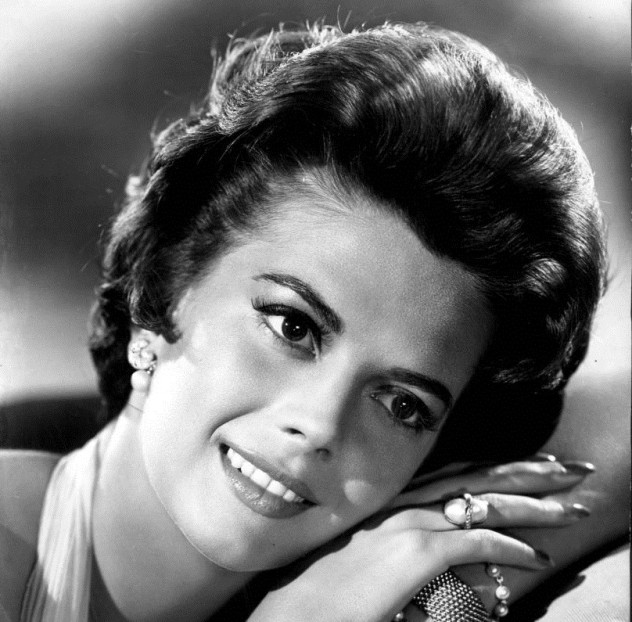
Natalie Wood’s birth name was Natalia “Natasha” Zakharenko. Her mother, Maria, wanted desperately for her daughter to become a star. “God created her, but I invented her” was Maria’s claim regarding her Natalie’s carefully crafted persona, right down to the name “Natalie Wood.” It worked, for better or worse.
When Natalie was five years old, Maria got her daughter a bit part in the film Happy Land. The film led to many more, and Natalie became a well-known child actress known as “one-take Natalie” because of her talent and professionalism at such a young age. Maria was behind the scenes, of course. At one point, she even went so far as to tear apart a butterfly to ensure Natalie could cry on cue.
As Natalie grew up, Maria used various methods to keep her in the limelight, such as setting up 15-year-old Natalie with 38-year-old Frank Sinatra and, when Natalie was 17, setting up a relationship with 43-year-old Nicholas Ray. Once again, Maria’s machinations worked. Nicholas Ray directed Rebel Without a Cause and the film showcased Natalie’s talent in a new light and introduced her as serious young actress.
But it didn’t always end well. Another meeting with a significantly older and very powerful actor allegedly ended in a brutal rape while Natalie was still in her teens. The story was recounted by Natalie’s friends, including her close confidant from childhood, Jackie Eastes, and Dennis Hopper, who had co-starred in Rebel Without a Cause. Natalie was reportedly scared to tell her mother, but she was forced to tell when she had to seek medical treatment for excessive bleeding and pain from the incident. The emotional trauma only deepened when her mother showed no support toward her ailing daughter, even pressuring Natalie to stay silent. One friend of Natalie claims that Maria actually “thought it was great” that Natalie was able to spend time with the man who allegedly raped her, as he could further her career.
Natalie suffered from alcohol abuse and had a number of high-profile but tumultuous relationships. She tried to commit suicide in 1966, prompting daily psychoanalysis for years. After becoming a mother, she put Hollywood aside to raise her two daughters. Her mysterious death in 1981 is still covered in the news and tabloids over 30 years later.
6Veronica Lake
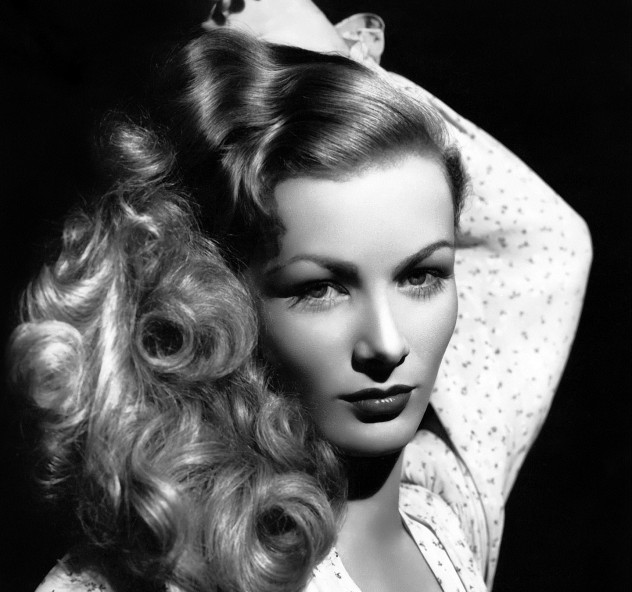
Veronica Lake was a film goddess of the 1940s, but by 1962 she was working for tips in a New York cocktail lounge. When she died in 1973 of hepatitis and kidney injury, she was so low on money that a friend had to pay for the funeral.
Born Constance Ockleman in Brooklyn, New York, there were symptoms of mental issues very early on including rebelliousness and a mercurial nature. She was kicked out of an all-girls Catholic boarding school for her constant disregard for authority and refusal to follow even basic rules. Regardless of how or why the trouble started, the mental issues progressed into odd speech patterns, hallucinations, and paranoia, eventually leading to a diagnosis of schizophrenia.
Despite her mental issues, which were certainly less understood at the time, her family supported a career in acting. They had moved to Miami which is where a talent agent first spotted Veronica. Upon his suggestion, they moved again to Los Angeles in order to take a chance on Veronica’s talent or, perhaps more accurately, exploit her as a golden ticket.
In 1948, once Veronica was a household name, her mother sued her for support claiming that the star would have never been an actress without her help and that Veronica had allegedly agreed to pay her mother and stepfather $200 a week for life.
Veronica’s career fell apart early. She was in her first movie by age 17, a star by 19 thanks to Sullivan’s Travels, but unable to find work in Hollywood by 30. Three divorces, the death of a child, untreated mental illness, alcoholism, and a generally difficult nature had finally broken Veronica down. The woman who had been known for her haughty beauty on screen died a bloated alcoholic with rotting teeth. Who knows what could have been had Veronica received the medication and treatment she needed?
5Audrey Hepburn
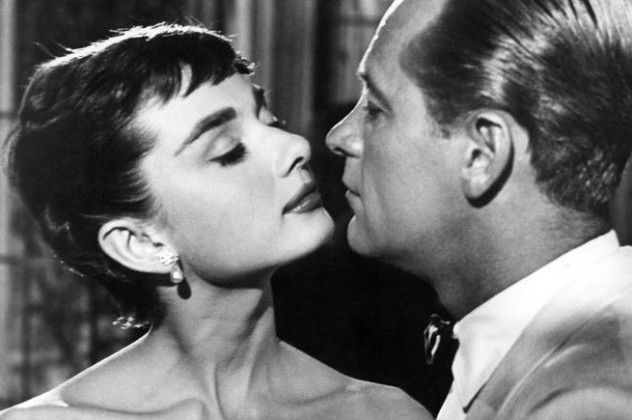
Audrey Hepburn became an ambassador for UNICEF in 1988 saying, “I can testify to what UNICEF means to children because I was among those who received food and medical relief right after World War II.” Her childhood was deeply affected by World War II. She said, “I had very little real youth. Few friends, little fun in the usual teenage way, and no security. ”
Audrey was born in 1929 to an aristocratic Dutch mother and a British-Irish father. Both parents were active fascists and sided with Hitler as he gained power in Europe. Audrey’s father abandoned the family when she was all of six and, after working in the Nazis’ London propaganda agency, he ended up in British internment camp before disappearing after the war (although it has been said that Audrey saw him again many years later). The desertion “destroyed” Audrey. She later said, “If I could just have seen him regularly, I would have felt he loved me.”
Her mother swapped political allegiances and moved the family to Holland for safety, but the country was occupied by the Germans soon after they arrived. Life during wartime was intensely difficult. Food was scarce, especially toward the end of the war, and Hepburn suffered from malnutrition, anemia, and respiratory illness.
Her tiny frame was said to be a result of a childhood with very little food. She recalled memories of her brothers eating dog biscuits to stay alive and trains going by, full of starving children like herself. One of her brothers was captured and sent to a Nazi labor camp.
When the Germans began rounding up all able-bodied people to help build fortifications, Audrey hid in an abandoned cellar for what ended up being many days on end, nearly dying from starvation and illness before she was able to escape. Fortunately, the war ended soon after and Audrey was able to receive help from the Red Cross. She died in 1993, a beloved icon of film who was also loved for her tireless work with UNICEF.
4Charlie Chaplin
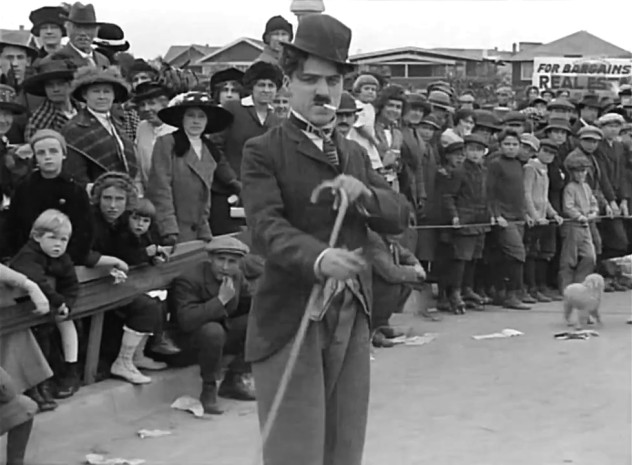
Charlie was born in England in 1889, and his mother Hannah was a singer and seamstress who was also said to be a prostitute to help make ends meet. Charlie once said to an assistant, “I don’t know, actually, who my father was.” In fact, Charlie was one of three sons born to Hannah via three different fathers. The last baby daddy cut off Hannah from their son, Charlie’s younger brother, claiming that she was an unfit mother.
Hannah struggled to support Charlie and his older brother, Sydney, and they lived in such poverty that Hannah’s sewing machine was repossessed for non-payment. Despite the circumstances, Charlie loved his mother, saying that she was “the most splendid woman I ever knew.”
Eventually, like a Dickens novel, the family entered a workhouse. Charlie and his older brother were transferred to the Hanwell Schools for Orphans and Destitute Children, separated for the first time because of their age difference. “My childhood ended at the age of seven,” Chaplin later said of this time period. He developed ringworm and was whipped for misbehavior. Worse yet, his mother did not visit him for nearly a year, which hurt him deeply.
When Hannah did show up, she was already showing signs of mental illness. Authorities thought she might have syphilis, which can attack the brain. Eventually, was sent to an asylum having become incoherent and violent. Charlie was about 11 years old and Sydney about 17. They were forced on Chaplin’s father and his mistress, Louise, by the authorities even though the adults had no interest in parenting. It was within a year that Charlie joined a group of professional clog dancers, became a performer, and never looked back.
The sculptor of Chaplin’s statue in Leicester Square claimed that Charlie had “the undeveloped thorax of an under-fed child” after seeing his exact measurements. Despite the terrible poverty Chaplin endured, it did inform his most famous character, the Tramp, which brought him millions of dollars and acclaim.
3Marlon Brando
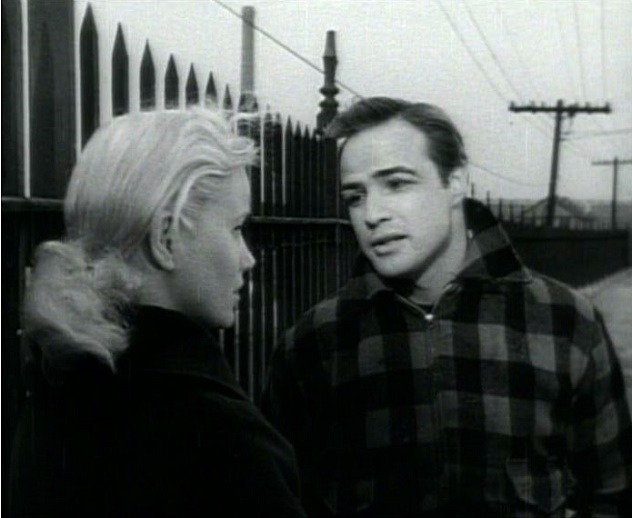
Marlon Brando changed the art and practice of acting. Martin Scorsese said it best when he said, “Everything we know about the power of great screen acting relates back to him.”
Marlon was born in 1924 in Omaha, but the family lived the majority of Marlon’s early years in Illinois. Marlon’s mother, Dodie, was an alcoholic who as Brando himself put it, “Preferred getting drunk to caring for us.” Marlon’s father, also named Marlon, was a traveling salesman who kept the family economically comfortable but was a cold and withholding man.
“The young Brando saw brutality in his father and self-abuse in his mother. It was constant, but always kept within the walls of the house,” claims psychiatrist Gary Lefer. Frannie Brando, one of Marlon’s two sisters, remembers “In our home, there was blame, shame, and punishment that very often had no relationship to the ‘crime,’ and I think the sense of burning injustice it left with all of us marked us deeply.”
Despite, or perhaps because of her neglect, Marlon worked hard for his mother’s attention, learning her favorite piano pieces to cheer her up. Meanwhile, Marlon Sr. was abusive of his son, commenting disparagingly on everything from his posture, to his behavior, to the way he spoke. Brando claims that he received not a single compliment from his father from kindergarten through his teen years. As a teen, Marlon Jr. would have to go out looking for his mother in the bars of Chicago’s skid row, oftentimes getting calls from the police to come and pick her up. When Marlon Jr. was 14, he broke up a violent argument between his parents, threatening to kill his father if he hurt Dodie again. The stress of home came out in the form of a stammer.
In the time-honored tradition of abused kids everywhere, Marlon acted out enough to be sent to a military academy. He wrote many letters to his parents but never heard back. “Which one of you died, and which one of you has broken your right arm?” It wasn’t all bad, though. The military academy was where Brando’s prodigious talent was discovered and encouraged by one of his English teachers. He soon dropped out and found his way to New York and Stella Adler. The rest is history.
2Louise Brooks
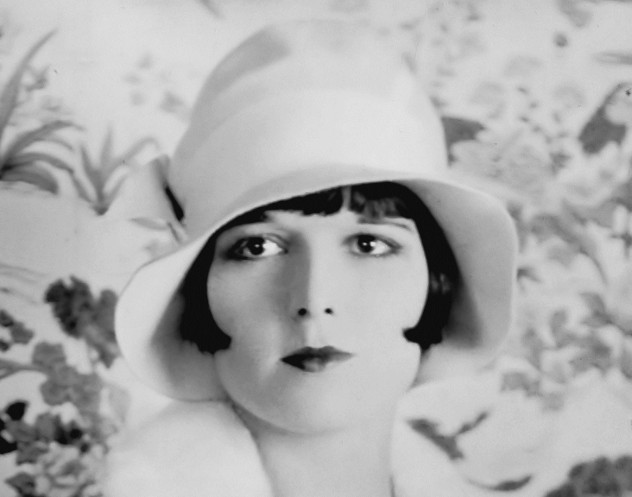
“There is no Garbo! There is no Dietrich! There is only Louise Brooks!” As Henri Langlois exclaimed, Louise Brooks was a force of nature. With an iconic black bob and straight eyebrows, the beauty achieved superstardom in the erotically charged 1929 film Pandora’s Box.
At age 15, Brooks left her home state of Kansas for New York. She trained with Martha Graham and was a member of the scintillating Ziegfeld Follies. As was custom during that time period, New York actresses and dancers were also expected to “entertain” their benefactors, who gave film roles and expensive gifts in return.
A wealthy man named Lord Beaverbrook fell hard for Louise, paying for her expensive room at the Algonquin Hotel and showering her with gifts. Despite his attention, Louise continued seeing a lot of men. So many that a hotel employee described her room as a “bordello” and the hotel management kicked her out. Her reputation in New York was that of a “nymphomaniac vampire.”
Despite the attention and relationships, Brooks claimed that she never loved anyone and later said, “If I had loved a man, could I have been faithful to him? Could he have trusted me beyond a closed door? I doubt it.” Much later in life, Louise revealed that, at the age of nine, she was molested by a 45-year-old man in her neighborhood.
Brooks said, “I’ve often wondered what effect [my molester] had on my life. He must have had a great deal to do with forming my attitude toward sexual pleasure.” Brooks’s mother was cold and never wanted children. When Brooks told her mother that she had been raped, her mother thought it was Louise’s fault for leading him on.
After becoming a worldwide superstar with Pandora’s Box, Brooks was haunted by bad career choices and a “reputation” inside Hollywood. She left to be a “kept woman” in New York, with pit stops in Wichita—where she was not accepted—and Paris. She faded into obscurity though film critics seemed to rediscover her throughout the years and celebrated her talents. She died in 1985.
1Jane And Peter Fonda
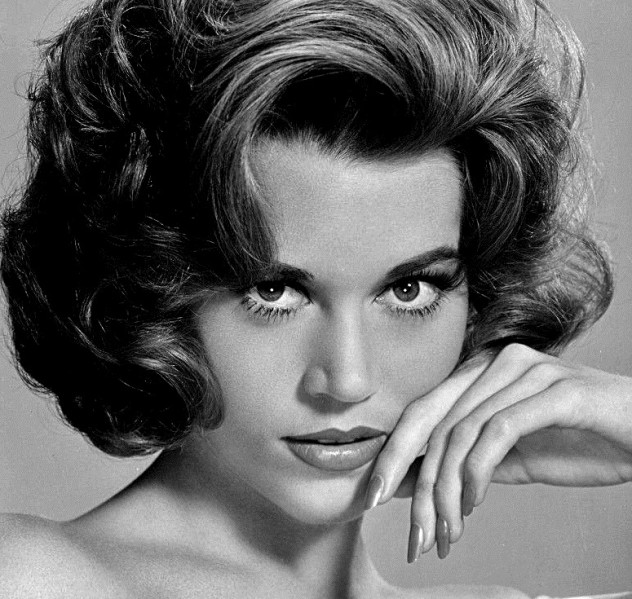
From the outside, Jane and Peter Fonda appear to have it all. They were born into great privilege as the children of film icon Henry Fonda, and they are gorgeous, talented, and successful. However, their lives have been deeply impacted by a dysfunctional childhood. Henry, despite his ability to connect with millions on screen, was emotionally remote and harsh.
“Plenty of criticism but no praise” is how Peter Fonda refers to his father’s parenting style. Jane said, “By the time I hit adolescence, the only time my father ever referred to how I looked was when he thought I was too fat (or) wanted me to wear a different, less revealing bathing suit, a looser belt, or a longer dress.”
Throughout Jane’s and Peter’s childhood, their mother, a socialite named Frances, had been in and out of the hospital for depression. After Peter was born, she developed symptoms of bipolar disorder. Weeks were spent in a manic state before she would recede into the darkness of her bedroom, shutting everyone out except her son, who was her favorite.
She was also obsessed with her weight, even telling young Jane, “If I gain any extra weight I’m going to cut it off with a knife!” Jane ended up fighting bulimia for many years. When Peter was 10 and Jane was 12, Frances entered a psychiatric hospital after Henry asked for a divorce. Unlike previous hospital visits, she did not return. Frances committed suicide by slicing her own throat.
Henry had everyone in Jane’s and Peter’s life tell them that Frances had actually died of a heart attack. Jane found out the truth in a movie magazine article. Not surprisingly, Jane and Peter had a lot of pain to get through as they grew up. While Henry was on his honeymoon with his third wife, less than a year after the death of Frances, Peter shot himself in the abdomen with a .22-caliber pistol.
Years later, while on acid with the Beatles, Peter retold the story which inspired the lyric, “I know what it’s like be dead” in “She Said She Said” on the album Revolver. He lifted his shirt to reveal the bullet wound and said, “I know what its like to be dead, because I shot myself.” John responded, “Don’t tell me about it. I don’t want to know what its like to be dead!”
Jane spent most of her life trying to please the men in her life, not realizing that she deserved to be treated with respect until her divorce from Ted Turner in 2001. Both have come to terms with their early life and have written about it extensively in memoirs.
Kindree Cushing had a wonderful childhood.

